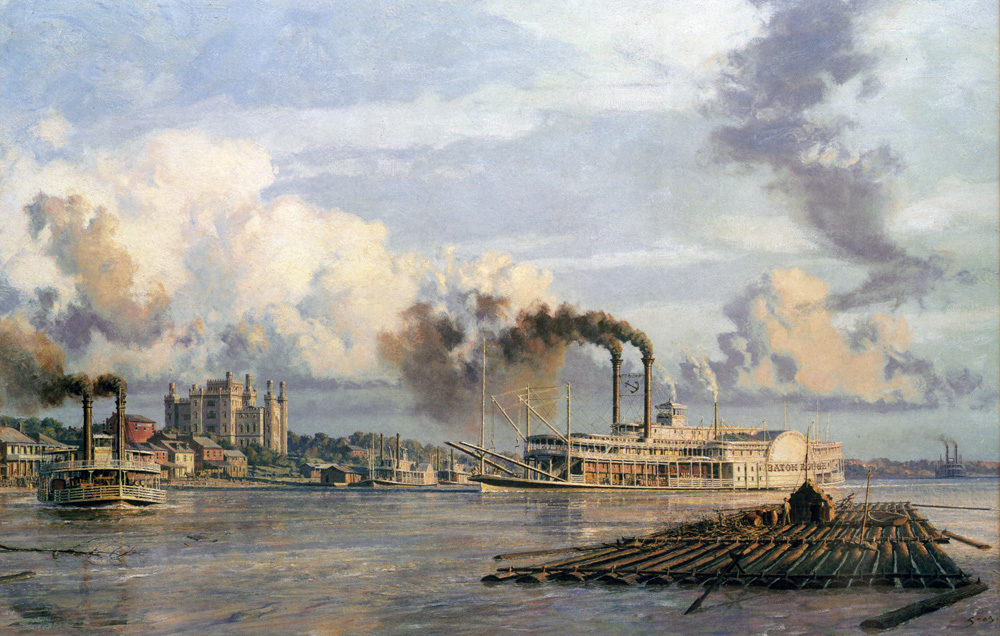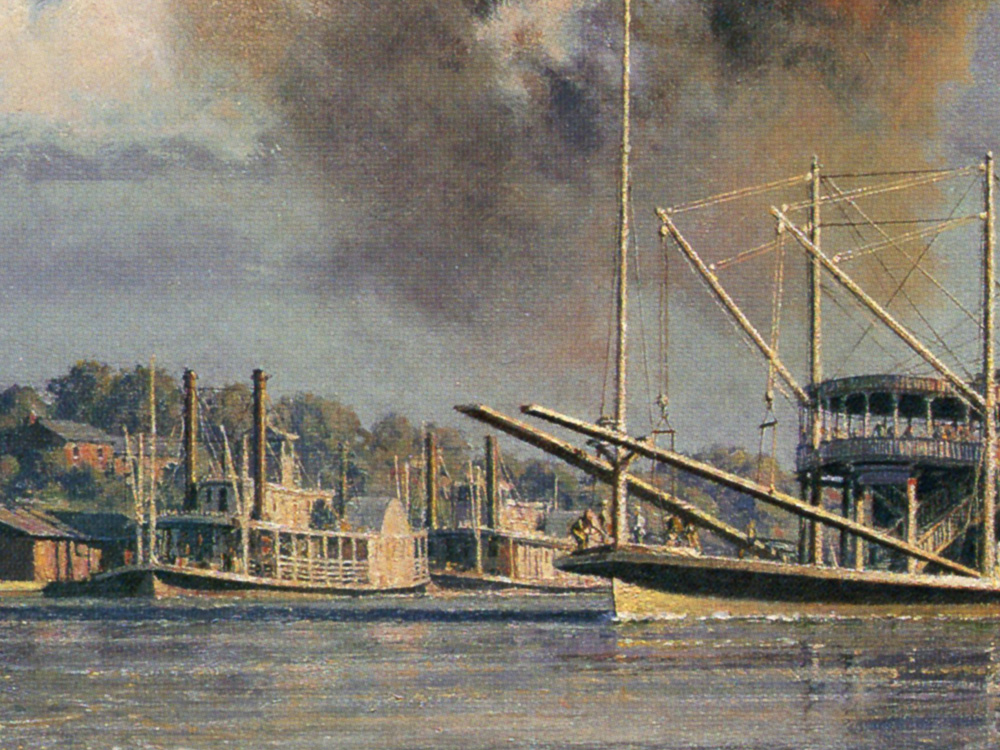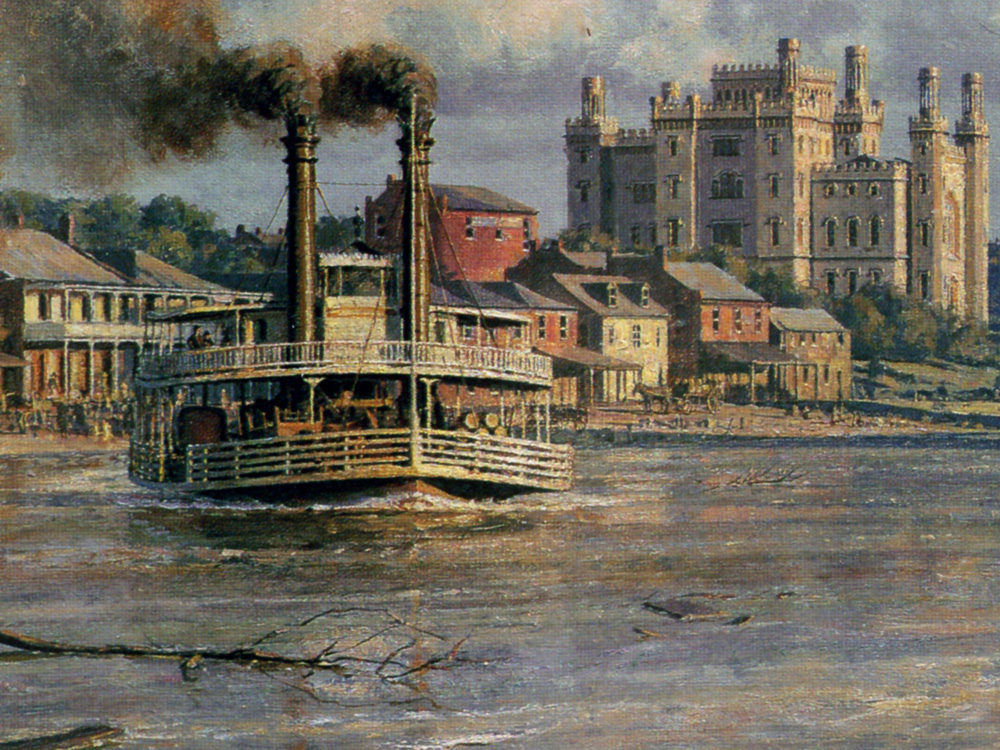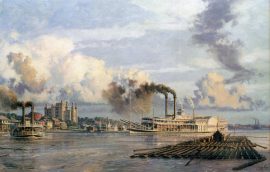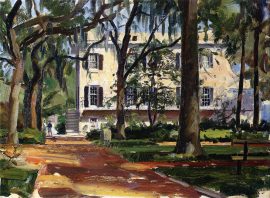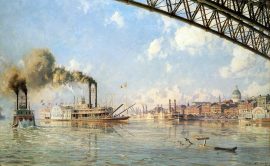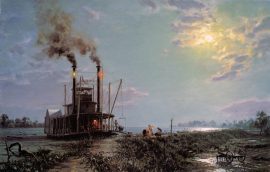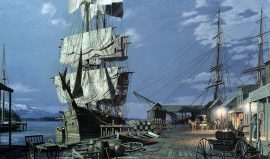Baton Rouge: The Anchor Line Steam Packet “City of Baton Rouge” Arriving in 1881
$1,200.00
The blast of a steamboat’s whistles from around the bend in the river could be guaranteed to draw spectators to the town wharf, but often one riverboat looked and sounded much like another. No one, however, could mistake the gleaming new Anchor Line steam packet for any other vessel. In the painting, I imagine she’s in the charge of pilot Horace V. Bixby, and sitting in the pilothouse as a guest is his old friend and former ‘cub’ pilot, Mark Twain. At the stopover in Baton Rouge, en route from New Orleans to St. Louis, Twain immediately commented that the new Louisiana State Capitol, a whitewashed castle with turrets, looked out of place. The celebrated writer was enthusiastic, however, about the magnolias in the Capital grounds: “lovely and fragrant with their dense, rich foliage and huge, snowballed blossoms.”
Twain’s biographer, Albert Bigelow Paine, later wrote, “the Anchor Line steamers were the acme of Mississippi steamboat building and they were about the end of it. They were imposingly magnificent, but they were only as gorgeous clouds that marked the sunset of Mississippi steamboat travel.”
It all more or less began on January 8, 1812, when the Mississippi’s first steam-powered vessel, the New Orleans, pulled in from Pittsburgh. The captain declared that he had been only 241 hours on the way, and all who flocked to the landing that day thought this was marvelous, for prior voyages from New Orleans to the mouth of the Ohio had taken from eight to ten weeks.
This historic visit by the New Orleans drastically affected the city’s development, as it opened up a vast trade with the upper Mississippi, the Missouri, and the Ohio. Ten years later, cargo and passengers streamed onto the levee from 83 steamboats, 174 barges, and more than 400 flatboats.
Two years after the date of the scene depicted in this painting another milestone in the history of Baton Rouge was marked as railroad connections were established between the city and New Orleans by way of the New Orleans and Mississippi Valley Railroad. Until December 15, 1883, Baton Rouge did not have direct rail connections with any other city. Attempts had been made as much as fifty years earlier, but a number of factors – reconstruction, a national recession in the 1870s, and a scandal involving construction contracts – had delayed major railroad building until 1880s.
In this view, the local ferry to Port Allen, on the left, pursues an upstream course to avoid the log raft headed south to the sugar region. The great sugar plantations are still there today – across the river and to the southwest of the city.
| Weight | 6.00 lbs |
|---|---|
| Catalog: | Stobart-012 |
| Artist: | John Stobart |
| Dimensions: | 18" x 30" |
| Edition: | 750 |

